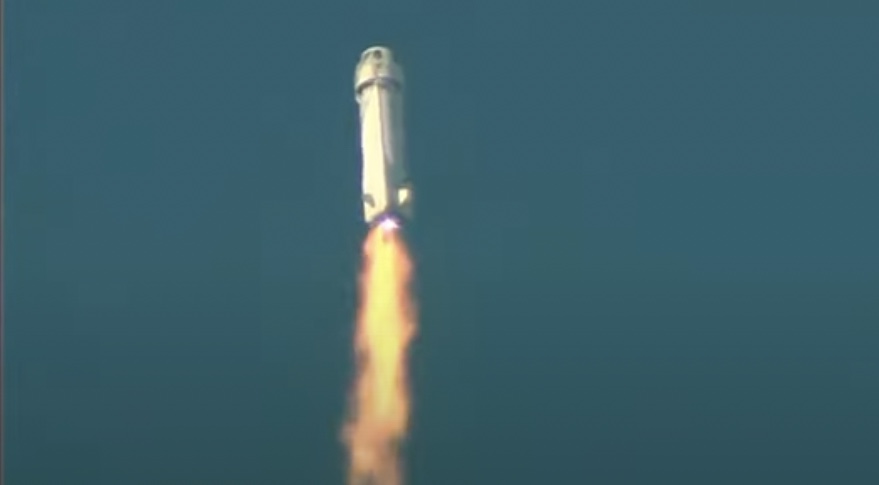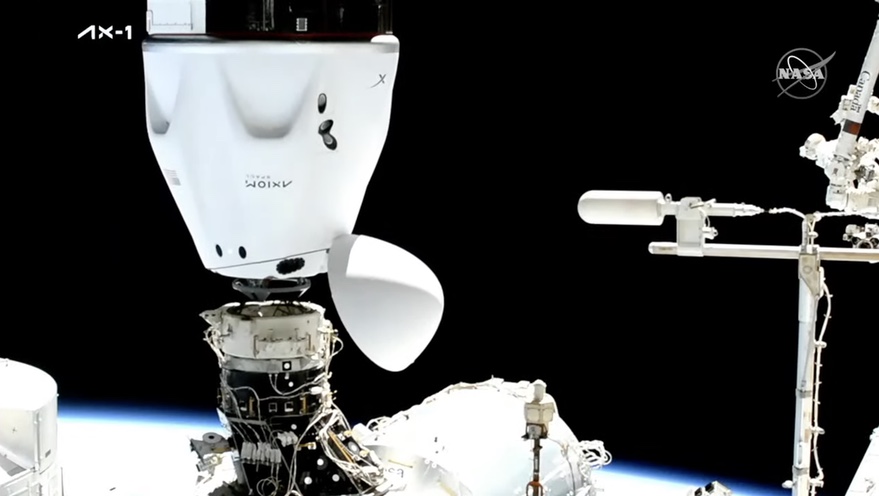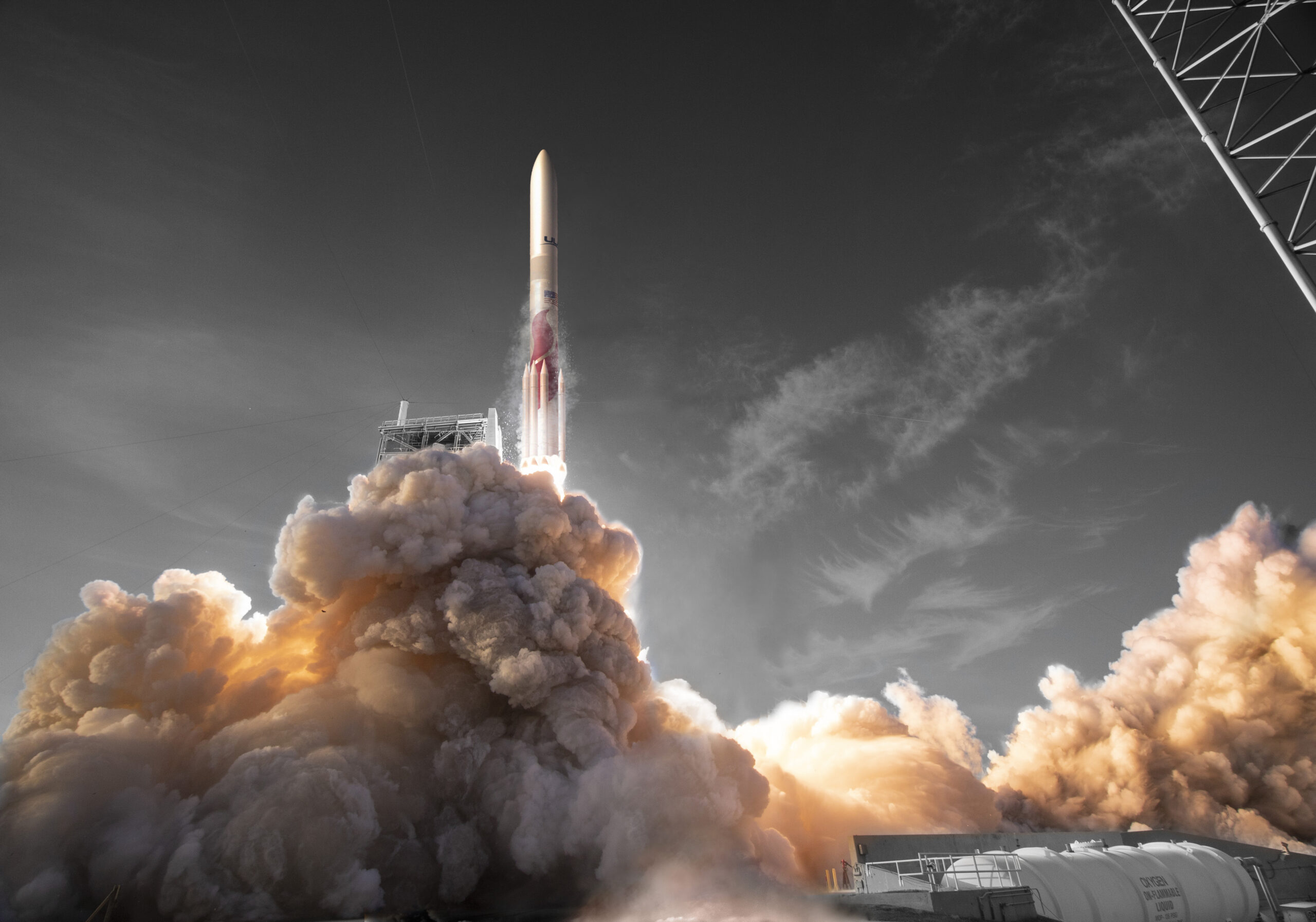Bandwidth-hungry regional satellite operators hunting for options
Original Publication Date: 2022-09-14 14:17

Regional satellite operators are looking for faster ways to add more capacity. Arabsat is in talks to buy Ka-band capacity in the Middle East and Africa. South Korea-based KT Sat is also open to opportunities for extra capacity. KT Sat is talking to SpaceX’s Starlink and others developing low Earth orbit constellations.
Blue Origin says still “super early” into New Shepard launch failure investigation
Original Publication Date: 2022-09-14 08:31

Blue Origin executive says it's too soon to conclude what caused New Shepard failure. Speculation has focused on a potential problem with the vehicle's BE-3 engine. Blue Origin plans to use a version of the BE-3, called the BE-3U, on the New Glenn orbital rocket.
Satlantis orders OHB Sweden satellites for multispectral mission
Original Publication Date: 2022-09-15 10:54

Satlantis, a Spanish Earth-observation technology company, signed a contract Sept. 14 to buy two multispectral satellites from OHB Sweden. Satlantis will supply the instrument, a sensor to gather optical and infrared imagery. The satellites are expected to weigh less than 150 kilograms and launch in 2024.
NASA requests proposals for two ISS private astronaut missions
Original Publication Date: 2022-09-15 10:37

NASA is seeking proposals for two private astronaut missions to the International Space Station. One mission would fly between late 2023 and mid 2024, and the other in the second half of 2024. The first PAM, the Ax-1 mission by Axiom Space, flew to the station in April.
New launch vehicles inch towards the pad
Original Publication Date: 2022-09-15 08:24

Several new launch vehicles, some years behind their original schedules, are now expected to make their inaugural launches within the next year. Executives of several launch providers said they were entering the home stretch of development of their next-generation launch vehicles. United Launch Alliance still preparing for a first launch of its Vulcan Centaur before the end of the year.
NASASpaceFlight.com
The SSLV or Small Satellite Launch Vehicle conducted its launch debut from Sriharikota, India on Sunday, August 7 at 03:48 UTC. An issue with the fourth stage resulted in the satellites being deployed in an unusable orbit. The SSLV program’s genesis was a December 2015 National Institute of Advanced Studies proposal to create a “Small Satellite Launch Vehicle-1”
Commercial Archives
A SpaceX Falcon 9 Block 5 carrying 54 Starlink satellites is now targeted to launch at 9:27 PM EDT on Thursday, Sept. 15. Unfavorable weather scrubbed attempts on Tuesday and Wednesday. The booster supporting Starlink Group 4-34 is B1067, which has flown on five previous missions.
International Archives
China has successfully launched a Chang Zheng 7A (CZ-7A), internationally known as the Long March 7A. The launch of the Zhongxing-1E series communications satellite to geostationary transfer orbit (GTO) took place at 13:18 UTC on Sept. 13.
Chinese Long March 3B Launches APStar-6C Communications Satellite – Spaceflight101

China conducted a rare commercial launch of a Long March 3B rocket with the APStar-6C communications satellite. Long March 3B lifted off from the Xichang Satellite Launch Center at 16:06 UTC on a mission of under half an hour to lift the spacecraft into an elliptical Geostationary Transfer Orbit. Confirmation of launch success was provided by APT Satellite around 40 minutes after liftoff when the satellite had been separated into its target orbit.
Blue Origin’s New Shepard Reaches new Heights in latest Test Flight – Spaceflight101

Blue Origin returned to its West Texas testing grounds on Sunday for the eighth flight of its reusable New Shepard launch system. The mission was designed to expand the vehicle’s operational envelope by sending it to a peak altitude of 107 Kilometers, a new record for New Shepard. Demonstrating that New Shepard can reliably lift its Crew Capsule above the Karman Line represents an important objective of the company’s drive toward beginning sub-orbital tourism flights.
ISS Updates – Spaceflight101 – International Space Station

A veteran NASA spacewalker and an EVA rookie from Japan ended their week with nearly six hours of work outside the International Space Station. The restoration of the Station’s Mobile Servicing System started last year and continued in January to provide Canadarm2 with a new pair of grappling hands.
Featured – Spaceflight101

SpaceX Falcon 9 takes to the skies over Florida’s Cape Canaveral Monday afternoon. First of at least six cargo ships inbound to the U.S. Segment of ISS this year. Critical delivery of science gear, supplies and maintenance hardware to the orbiting laboratory.
News – Spaceflight101

Russia's Rockot booster is set to blast off from the Plesetsk Cosmodrome at 17:57 UTC with the Sentinel-3B multi-function satellite. The rocket will carry a Russian Rockot booster with a Sentinel-3B satellite attached to it.
Re-Entry: Long March 11 Rocket Body – Spaceflight101

The CZ-11 fourth stage used leftover propellant for a partial de-orbit maneuver, lowering its perigee to 120 Kilometers. It is reportedly built around a YF-50 main engine and in a nominal mission conducts the orbital circularization after the three CZ-11 stages finish their job.
NASA to Host Briefing on Perseverance Mars Rover Mission Operations

The briefing will livestream on NASA Television, Twitter, Facebook, and YouTube, as well as the agency’s app. Questions can be asked on social media during the briefing using #AskNASA. Perseverance marks the first step in the Mars Sample Return campaign, which would return scientifically promising samples to Earth for further study.
NASA’s AIRS Instrument Records Typhoon Hinnamnor Before Landfall

Airlift is one of six instruments aboard NASA's Aqua satellite. AIRS senses infrared and microwave radiation emitted from Earth to provide a 3D look at the planet’s weather and climate. With more than 2,000 channels sensing different regions of the atmosphere, the system creates a global, 3D map of atmospheric temperature and humidity.
A Cosmic Tarantula, Caught by NASA’s Webb

The Tarantula Nebula has a similar type of chemical composition as the gigantic star-forming regions observed at the universe’s “cosmic noon,” when the cosmos was only a few billion years old. Webb will provide astronomers the opportunity to compare and contrast observations of star formation in the Tarantula Nebula with the telescope’s deep observations of distant galaxies from the actual era of cosmic noon.
NASA’s Webb Takes Its First-Ever Direct Image of Distant World

Astronomers have used NASA’s James Webb Space Telescope to take a direct image of a planet outside our solar system. The exoplanet is a gas giant, meaning it has no rocky surface and is not habitable. The finding is detailed in NASA’s latest JWST blog entry.
Explore the Solar System With NASA’s New-and-Improved 3D ‘Eyes’

Learn the basics about dwarf planets or the finer points of gas giants. Ride alongside no fewer than 126 space missions past and present. Scroll through rich interactive journeys, including Voyager’s Grand Tour of Jupiter, Saturn, Uranus and Neptune. You can rotate objects, compare them side by side, and even modulate the perspective as well as the lighting.
Engineers Solve Data Glitch on NASA’s Voyager 1
Engineers have repaired an issue affecting data from NASA’s Voyager 1 spacecraft. Earlier this year, the probe’s attitude articulation and control system began sending garbled information about its health and activities. The team has since located the source of the garbled information: The AACS had started sending the telemetry data through an onboard computer known to have stopped working years ago.
NASA’s Webb Detects Carbon Dioxide in Exoplanet Atmosphere

First clear evidence for carbon dioxide ever detected in a planet outside the solar system. Understanding the composition of a planet’s atmosphere is important because it tells us something about the origin of the planet and how it evolved. In the coming decade, JWST will make this measurement for a variety of planets, providing insight into the details of how planets form.

